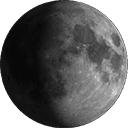The ALHAMBRA survey: A large area multimedium-band optical and near-infrared photometric survey
Author(s): Moles, M.; Benitez, N.; Aguerri, J. A. L.; et al.
Source: ASTRONOMICAL JOURNAL Volume: 136 Issue: 3 Pages: 1325-1339 DOI: 10.1088/0004-6256/136/3/1325 Published: SEP 2008
Here we describe the first results of the Advanced Large Homogeneous Area Medium-Band Redshift Astronomical (ALHAMBRA) survey, which provides cosmic tomography of the evolution of the contents of the universe overmost of cosmic history. Our novel approach employs 20 contiguous, equal-width, medium-band filters covering from 3500 angstrom to 9700 angstrom, plus the standard JHK(s) near-infrared (NIR) bands, to observe a total area of 4 deg(2) on the sky. The optical photometric system has been designed to maximize the number of objects with accurate classification by spectral energy distribution type and redshift, and to be sensitive to relatively faint emission features in the spectrum. The observations are being carried out with the Calar Alto 3.5 m telescope using the wide-field cameras in the optical, Large Area Imager for Calar Alto, and in the NIR, Omega-2000. The first data confirm that we are reaching the expected magnitude limits (for a total of 100 ks integration time per pointing) of AB <= 25 mag (for an unresolved object, signal-to-noise ratio = 5) in the optical filters from the blue to 8300 angstrom, and from AB = 24.7 to 23.4 for the redder ones. The limit in the NIR, for a total of 15 ks exposure time per pointing, is (in the Vega system) K-s approximate to 20 mag, H approximate to 21 mag, J approximate to 22 mag. Some preliminary results are presented here to illustrate the capabilities of the ongoing survey. We expect to obtain accurate redshift values, Delta z/(1+z) <= 0.03 for about five x 10(5) galaxies with 1 <= 25 (60% completeness level), and z(med) = 0.74. This accuracy, together with the homogeneity of the selection function, will allow for the study of the redshift evolution of the large-scale structure, the galaxy population and its evolution with redshift, the identification of clusters of galaxies, and many other studies, without the need for any further follow-up. It will also provide targets for detailed studies with 10 m class telescopes. Given its area, spectral coverage, and its depth, apart from those main goals, the ALHAMBRA survey will also produce valuable data for galactic studies.






